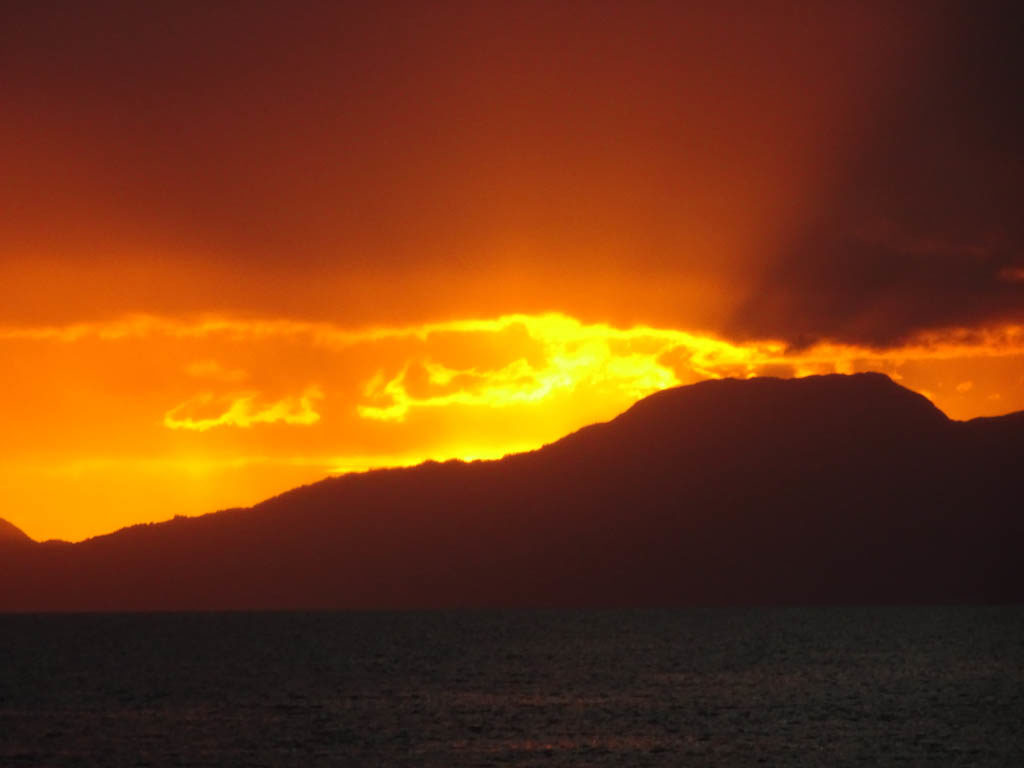
We left Cumberland Bay, Saint Vincent heading for Martinique on March 23. The trip is too far to do during daylight in a single day, so we anchored in Rodney Bay, St. Lucia for the night after a fine day of sailing. The next morning we departed for the relatively short trip across the Saint Lucia Channel to the Marina du Marin in the Cul-du-Sac du Marin in Martinique. Once into the channel we began to be hit by small but intense squalls that made the trip a bit more exciting than we had expected. Around noon, as we approached the narrow and winding entry channel through reefs into the Cul-du-Sac, we saw a very large squall approach. Not wanting to be caught in a squall in a narrow channel through reefs, we slowed the boat down to see what would happen. The squall hit with surprising speed and intensity. It was the strongest squall we have experienced since we were in the Pacific, with 40 knots of wind and blinding rain. The wind did not let up and there were out of control charter boats and weekend sailors maneuvering in our path. We headed into the nearby anchorage at Sainte Anne to wait for things to calm down. At 4:15 pm, the skies had mostly cleared and the wind had abated, so we headed into the Cul–du-Sac to enter the marina. Just as we began maneuvering through the moored boats in front of the docks, at the direction of the dockmaster, another squall came up over the hills. Should we abandon our entry we asked. “No, but hurry up!” he replied. We did and made a safe if inelegant arrival at our assigned berth.
In the Marina du Marin we picked up some boat parts that we had ordered and extensively provisioned the boat. We spent a quiet week and then left for the anchorage at Sainte Anne again to meet our good friends Dave and Melinda on “Sassoon.” We took a great hike from Sainte-Anne to Anse des Salines where we had an excellent lunch of fresh fish. After two short days together we once again said goodbye to “Sassoon” as they would be heading west to Bonaire and Curacao, and we were about to head north.
On April 4, we departed for Saint Pierre at the northern end of the island of Martinique. Once known as the “Paris of the Caribbean” the town was destroyed in 1902, when the volcano Mount Pelée erupted, killing 28,000 people. The entire population of the town, as well as people from neighboring villages who had taken refuge in the supposedly safe city, died, except for two people. Mount Pelée still towers over the town and is closely watched by volcanologists. It is absolutely spectacular when you sail past it, looming up over the sea and completely covered in lush green forests.
The next day we sailed across the Dominica Channel and up the west coast of Dominica to Prince Rupert Bay. We have fond memories of our earlier stops in Dominica in 2004 and 2006, but knew that Dominica had been hit by category 5 Hurricane Maria in September, 2017. That hurricane destroyed 90 percent of the structures on the island, and we did not know what to expect. On entering the bay, we called for Martin on the VHF to guide us to a mooring. We used Martin in our 2004 and 2006 visits and he is still the same smiling and helpful guide in his skiff “Providence.” The brightly painted wooden “Providence” was lost in the hurricane and now he was making do with an aluminum skiff until he could arrange to acquire a new wooden boat. All of the “yacht guides” and yacht oriented businesses have banded together into a cooperative called P.A.Y.S. (Portsmouth Association of Yacht Services) based in Portsmouth, the town located in Prince Rupert Bay. They run the moorings and patrol Prince Rupert Bay 24/7 during the winter sailing season (November to the end of May). They help “yachties†with numerous services plus have a great beach BBQ once a week for all of the sailors.
The hurricane stripped all of the tree on the surrounding mountains so the bay had a very different look. People in Dominica are resilient and with some assistance they are rapidly rebuilding. The biggest tourist attraction in the bay is the Indian River, a protected reserve. Dominated by the spectacular buttressed Bwa Mang trees and mangroves, you are guided up the Indian River by licensed boatmen in hand-oared river boats who take you silently past many types of wild life and plant life along the swampy river bank. The hurricane filled the river with tree limbs and other detritus. The PAYS cooperative cleaned it all out and returned it to its previous state as much as possible. We did the trip with Martin again (our fourth time) and saw egrets, crabs, iguanas, hummingbirds and other creatures.
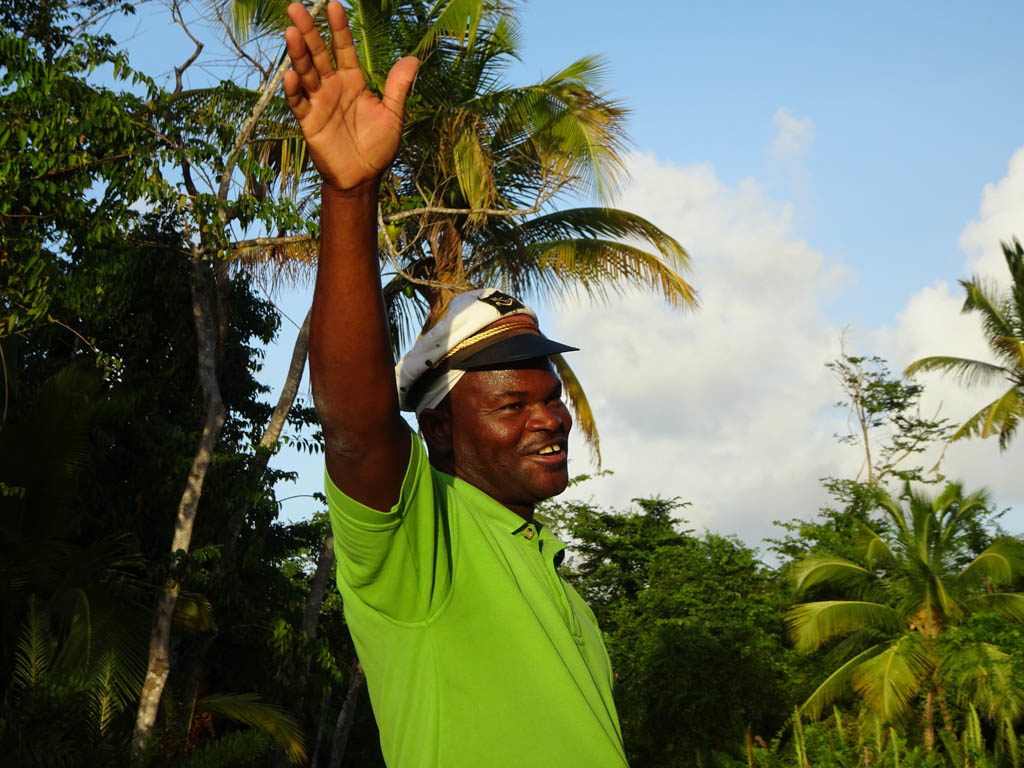
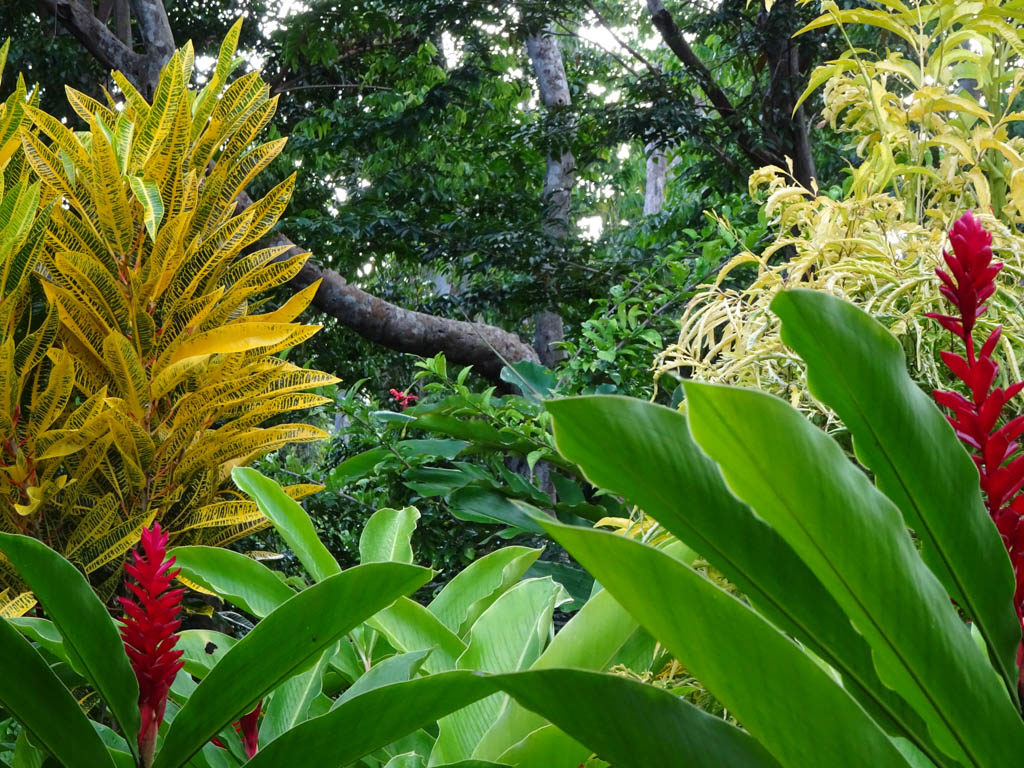



On April 10, we left Prince Rupert Bay, Dominica and sailed through the Guadeloupe Passage to the small island of Marie Galante. Marie Galante is part of the French overseas region of Guadeloupe, lying about 15 nm from Basse-Terre, the western-most main island of Guadeloupe. We spent a few days here in 2004 and really liked it even though the anchorage is quite open and can get quite rolly if the winds switch to the north. As before, we anchored at Saint-Louis, a small town on the western side of the island. We expected to spend a week there but it was such a pleasant place that we stayed for 18 days. For us, Saint-Louis had everything we were looking for. The anchorage is gently sloping and shallow with a thick sand bottom. We anchored with only one meter under the keel. It never got rolly. The water is crystal clear and inviting for swimming. The town is small and very quiet., No bars and music at night. No traffic. In fact, few people around at all. The town does have a few excellent seafood restaurants (“La Baleine Rouge” was our favorite) where we had wonderful meals served by friendly staff that got to know us well. There is a new, secure dinghy dock on the pier. A 15 minute walk past the sugar cane fields bring you to a “U Express” supermarket that had fresh fruits and veggies and all of the grocery items we need. Near the pier is a butcher and a bakery (“Delices de Saint-Louis”). Plus, we did an easy and fast customs and immigration check-in and check-out with Lily, the woman who runs the local tchotchke shop, and we bought two handpainted coffee cups from her too. There is an excellent hike along the shore and through the woods to a deserted beach. The only thing lacking was decent internet on the boat. It was abysmal. So we had long French-style lunches at “La Baleine Rouge” which had free WiFi. We lingered over coffee and homemade ice cream while checking our email and the news.
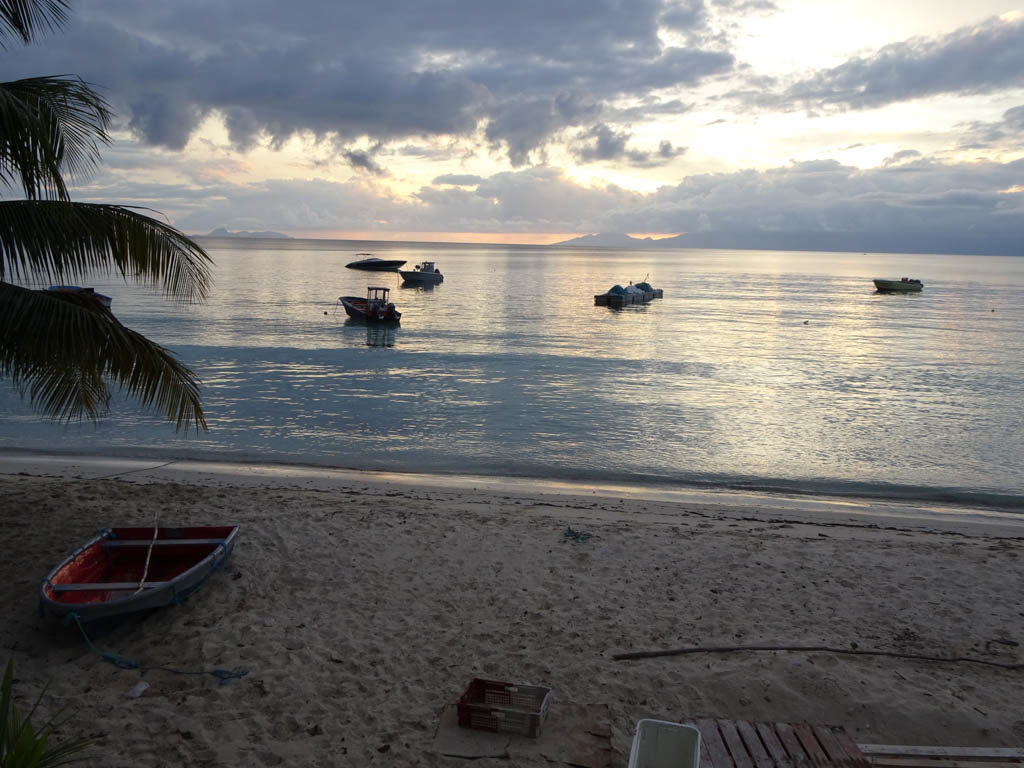
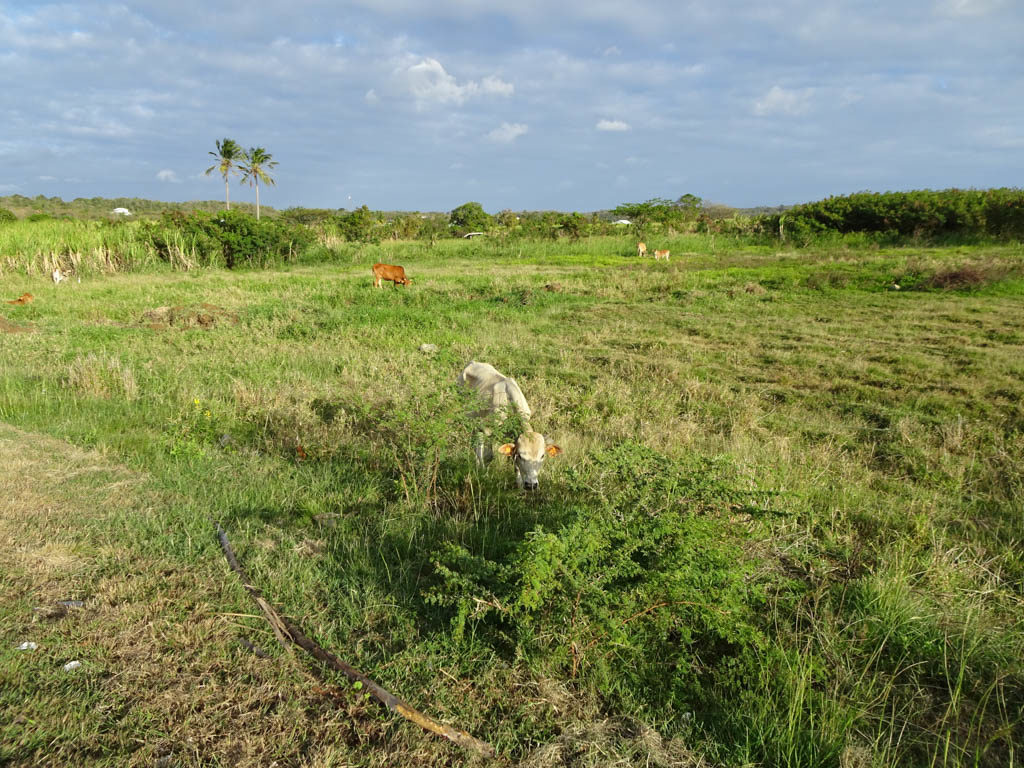
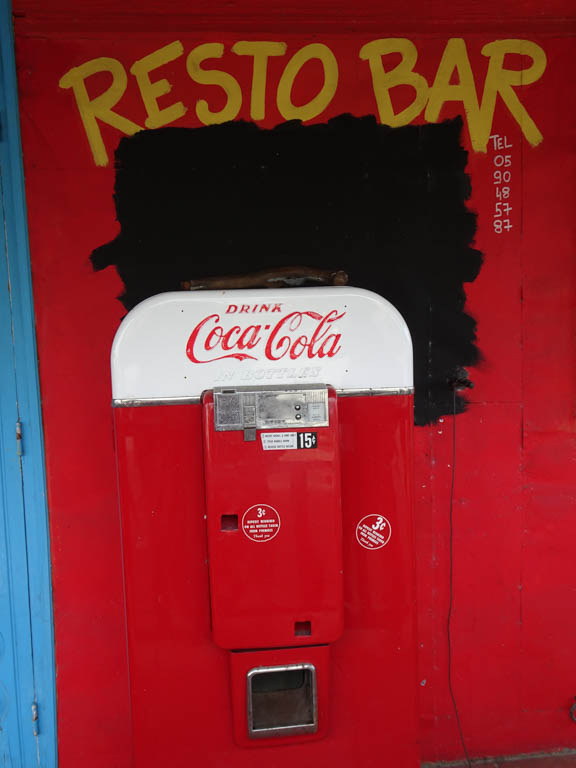
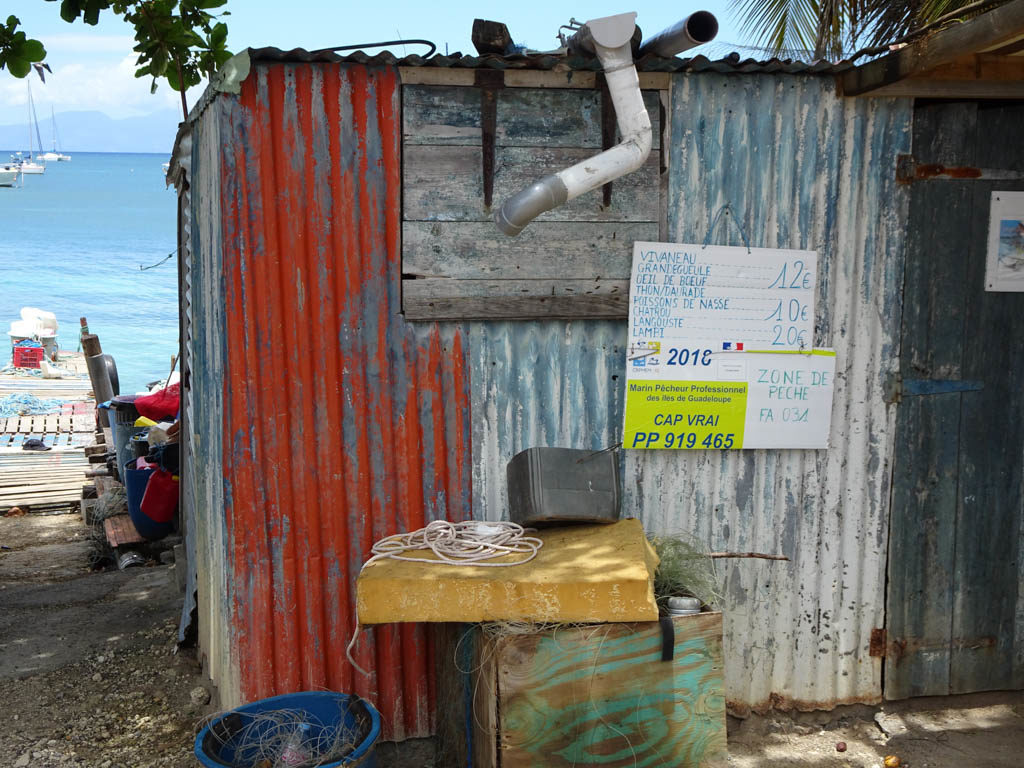

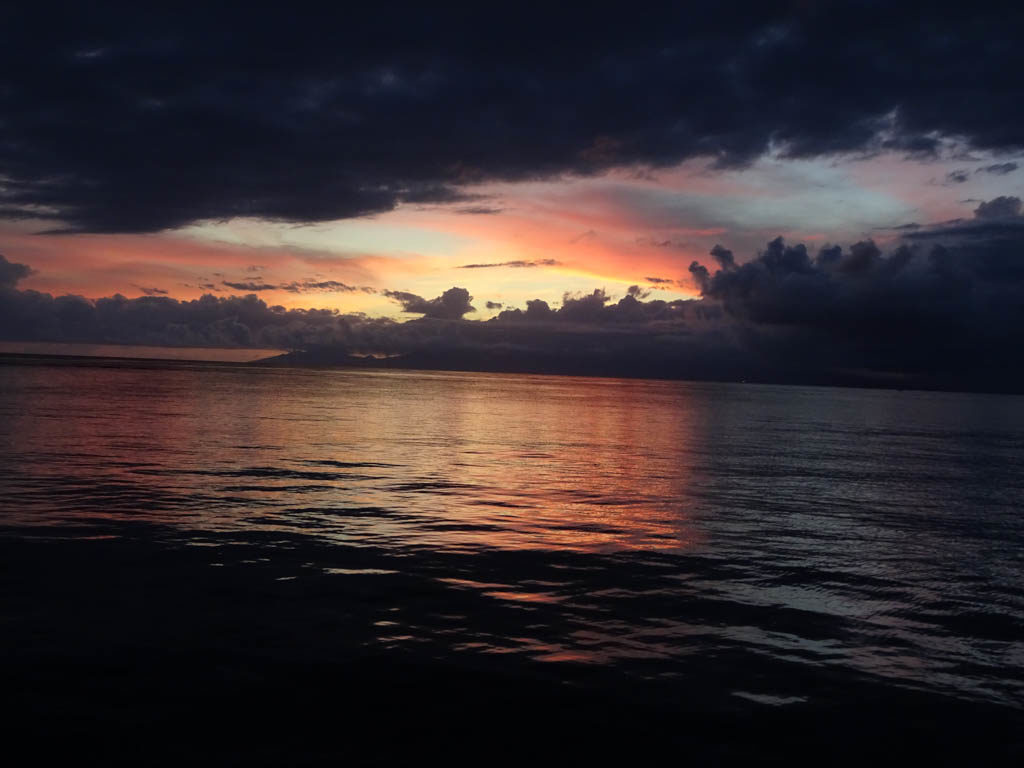
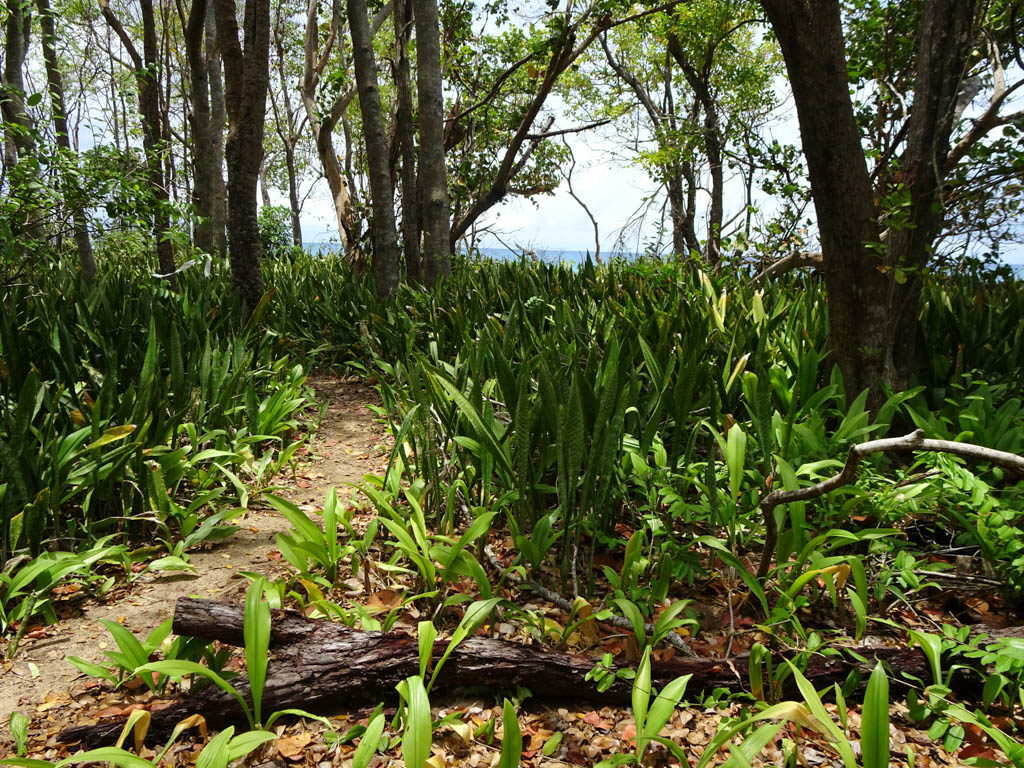
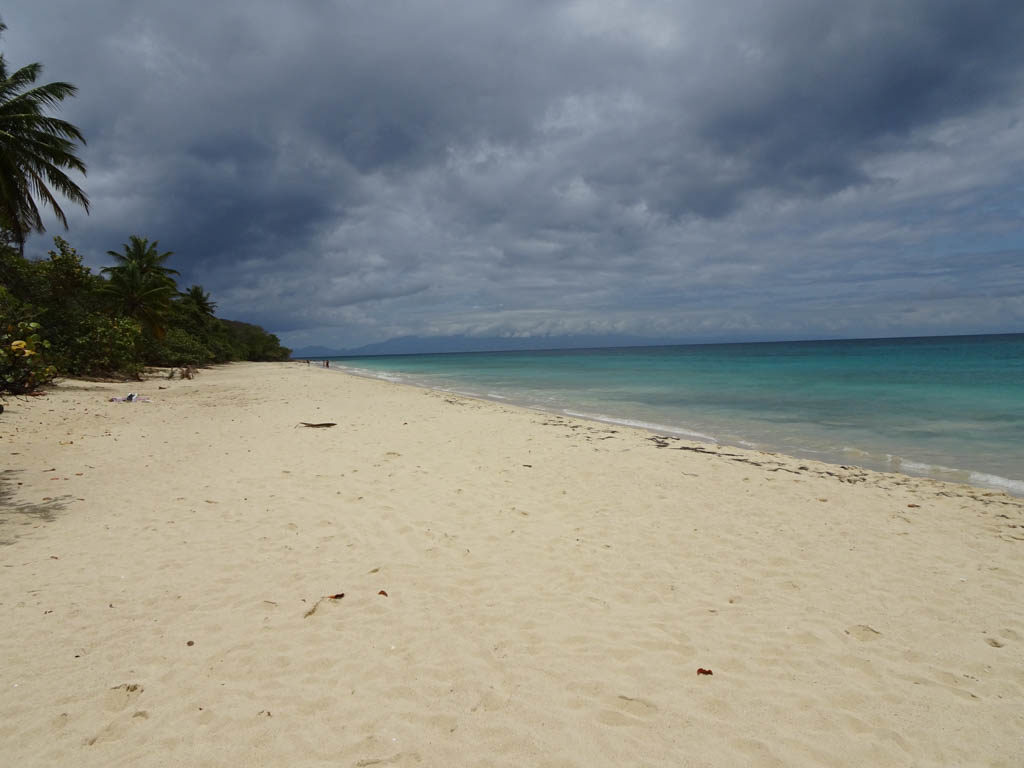
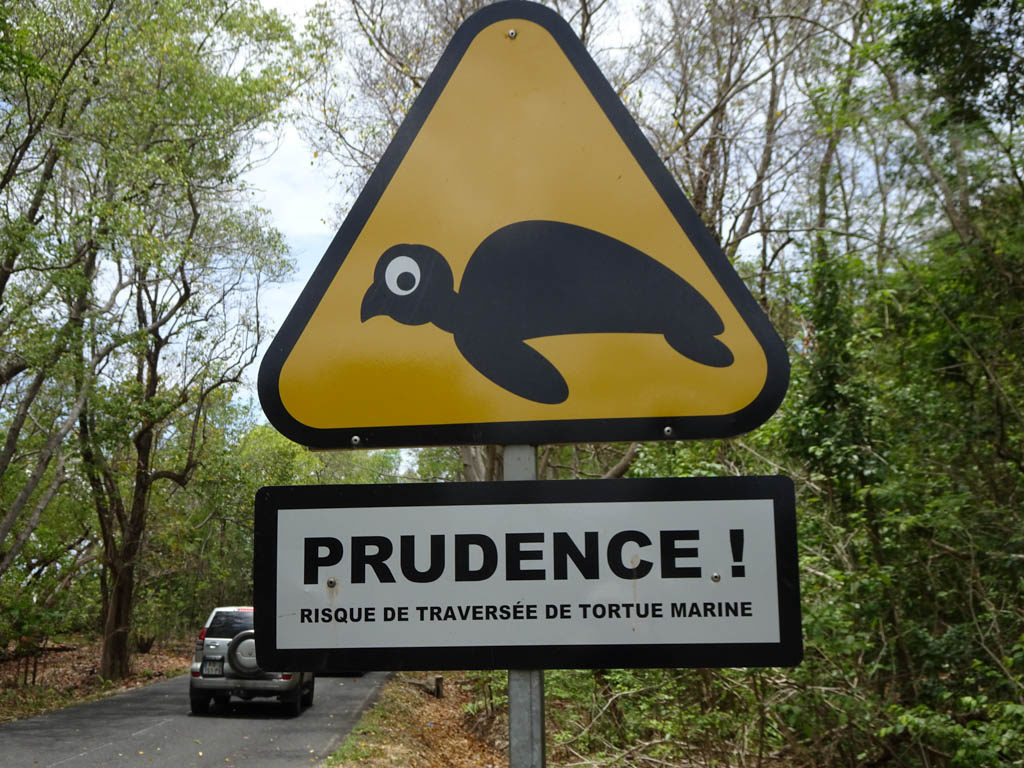
We departed Marie Galante on April 28 heading for the Jacques Cousteau Marine Park (Pigeon Island) on the west coast of Basse-Terre, Guadeloupe. We got knocked around by squalls while rounding the southern tip of Basse-Terre where it always seems to be raining. Pigeon Island did not impress and we left after one night. We departed in the afternoon of April 29 for an overnight sail to Marigot Bay, Saint Martin. There was lots of wind and we made excellent time, arriving in the morning to Marigot Bay on the French side of the island. We will describe our experience in Saint Martin (Sint Maarten) in our next post.
M.
